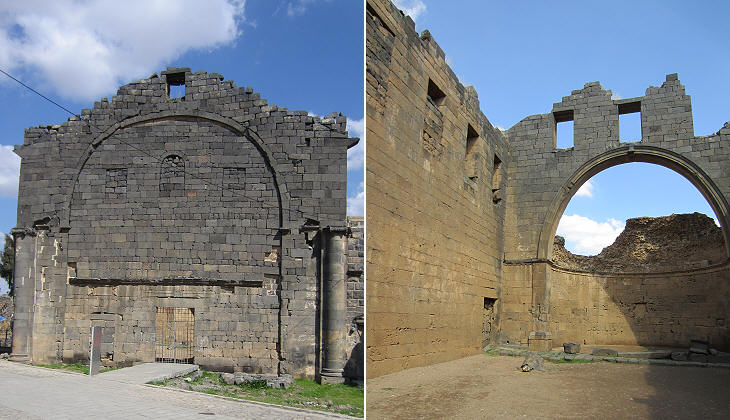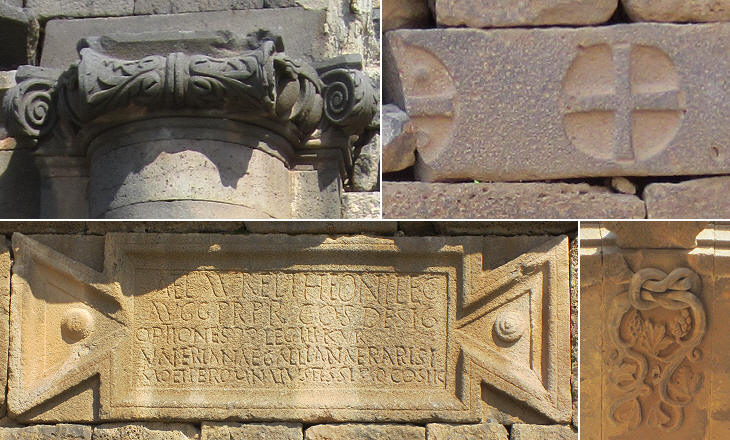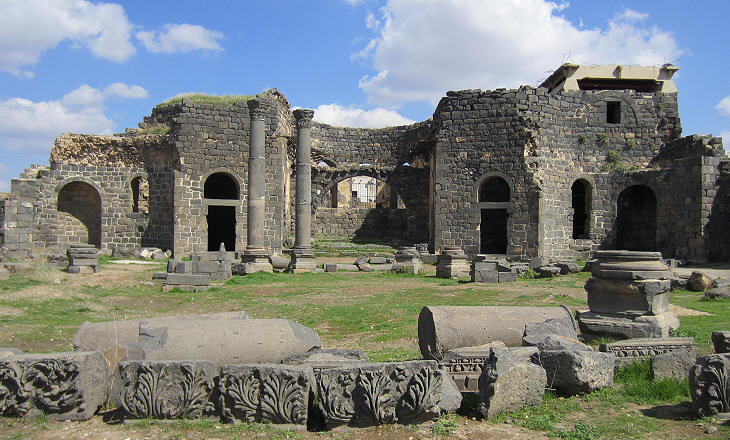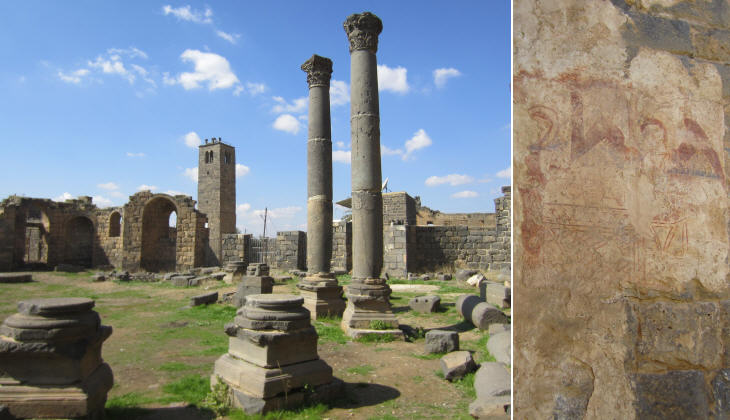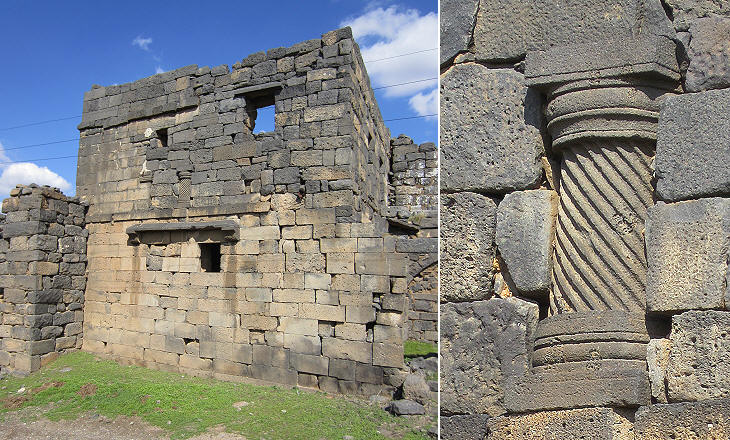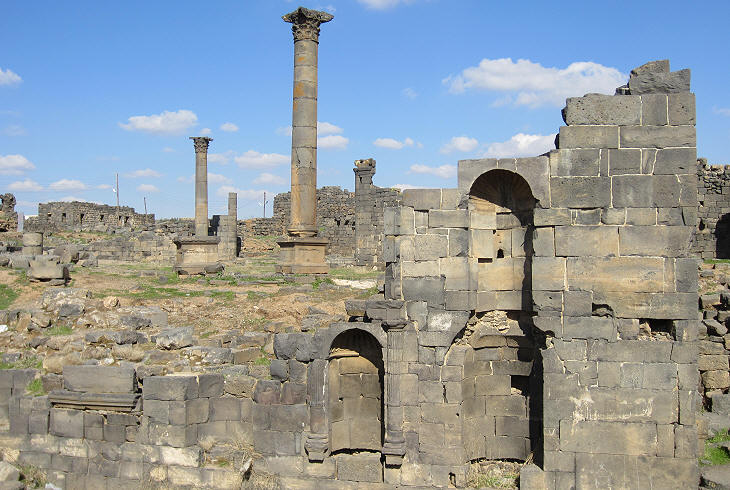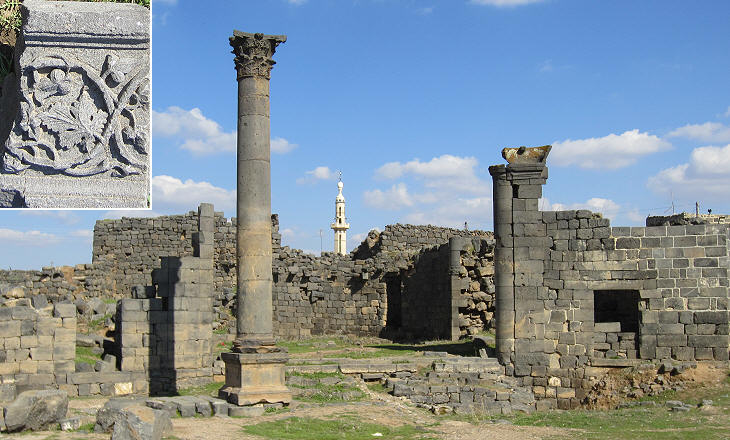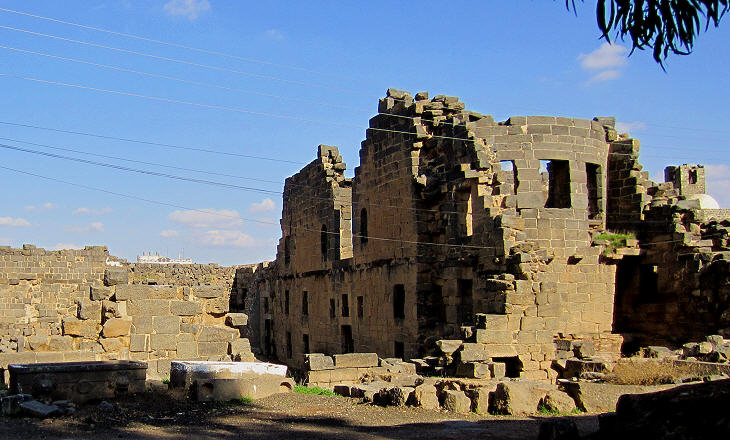  What's New! Detailed Sitemap All images © by Roberto Piperno, owner of the domain. Write to romapip@quipo.it. Text edited by Rosamie Moore. Page added in June 2011. |
 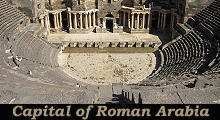 - Bosra - Christian Monuments - Bosra - Christian Monuments(Theatre at Bosra) Bosra is a Syrian town which is located south of Damascus and which enjoyed a period of great prosperity after being annexed to the Roman Empire by Emperor Trajan in 106 AD; see a page on Roman Bosra.
Bosra, notwithstanding having been seized and sacked in 269 by Queen Zenobia of Palmyra, continued to be a rich town until the middle of the VIth century. A Christian community in Bosra is recorded from the IInd century, but the town does not retain any early church. After the 392 decree by Emperor Theodosius, which banished non-Christian beliefs, a large pagan building was turned into a church. According to early Muslim historians, Bahira, a monk living near the church, met Prophet Muhammad when he was a boy; Muhammad was travelling with his uncle, a merchant; the monk told the uncle that Muhammad was the prophet mentioned in the original gospels.
The fašade of the basilica retains a Roman inscription which was first reported in 1822 by Johann Ludwig Burckhardt, a Swiss traveller and orientalist; he discovered the ancient city of Petra, which before Bosra was the capital of Nabatene, a small independent kingdom, which eventually became the Roman Province of Arabia. Legio III Cyrenaica was a legion established by Marc Antony; it was stationed in Egypt until Emperor Hadrian relocated it to Bosra.
In 512-513 a large cathedral was dedicated to Sts. Sergius, Bacchus and Leontius, three Roman soldiers who suffered martyrdom to profess their faith; the cult of military saints was promoted by the Byzantine emperors as a way of strengthening the morale of the population at a time when the empire was threatened by the Sassanids (Persians); churches dedicated to these saints can be seen at Qara and Maaloula, two other towns in southern Syria. The design of the cathedral was similar to that of Hagia Sophia in Constantinople, but the dome collapsed very soon thereafter. Ezra, a small town near Bosra retains a church dedicated to St. George which was built with the same design, but on a much smaller scale.
In the IXth century, after the Arab conquest of Bosra in 635, a small church was nested into one of the arms of the cathedral. The reduced size of this church indicates that only a few Christians lived in Bosra.
A large building behind the cathedral is known as the Bishop's Palace, but this being the actual residence of the bishop is no longer regarded as likely. The palace is a clear example of spolia, i.e. the re-use of decorative material on new buildings.
A complex of buildings known as the Central Plan Church has puzzled archaeologists for a long time: it is located outside the walls of the Roman town near the Nabatean Gate, so in origin it was probably a sanctuary of the Nabateans; most of the materials are spolia of Roman buildings of the IInd century, including the niches which decorate the fašade.
The central area was not covered by a dome, but by a wooden roof; the size of the complex and the unearthing of a synthronon in one of the apses have led archaeologists to believe this complex was the cathedral of Bosra, instead of the church dedicated to the military saints. A synthronon is a semicircular step in the apse of an eastern church at the centre of which the bishop's seat was placed.
An imposing palace located at a short distance from the Central Plan Church is now thought to have been the residence of the bishop. It was known as Trajan's Palace, on the assumption it was built by Emperor Trajan on the site of the former palace of the Nabatean kings.
Based on the assumption that the palace had been built by Trajan, a hall with two apses was named triclinium, the dining room of the Romans, but it now appears to be the reception hall of the bishops. The image in the background of this page shows a detail of a detached mosaic on display at the Theatre of Bosra. Go to: Roman Bosra Muslim Bosra Other Roman towns near Bosra: Philippopolis Qanawat Shaqqa Map of Syria with all the locations covered in this website  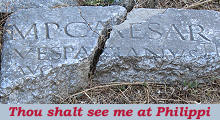 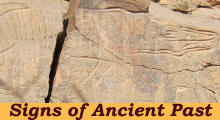 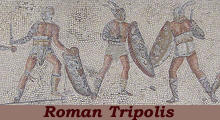 |
